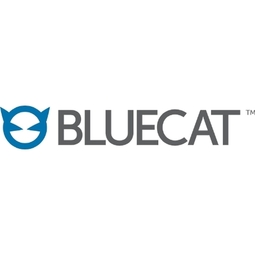Nutanix
The enterprise cloud company making datacenter infrastructure invisible
Overview
|
HQ Location
United States
|
Year Founded
2009
|
Company Type
Public
|
Revenue
< $10m
|
|
Employees
1,001 - 10,000
|
Website
|
Stock Ticker
NASDAQ: NTNX
|
Twitter Handle
|
Company Description
Nutanix makes infrastructure invisible, elevating IT to focus on the applications and services that power their business. The Nutanix enterprise cloud platform leverages web-scale engineering and consumer-grade design to natively converge compute, virtualization and storage into a resilient, software-defined solution with rich machine intelligence.
IoT Solutions
From customer interactions to web Tracking to security logging, enterprises generate and have access to a vast amount of data per day. Turning that data into actionable insights is a challenge for traditional databases and infrastructure. Finding trends such as security threats or new business opportunities from this data requires rethinking of not only the application stack, but also the compute and storage infrastructure.
Big data applications, including Splunk and Hadoop, enable enterprises to quickly gather insights and opportunities from their data. Workloads such as these are pushing the performance and scalability limits of traditional three-tier infrastructures, requiring good sequential and random performance across large datasets and multiple nodes.
The state-of-the-art Nutanix hyperconverged architecture with web-scale technologies delivers performance equivalent to bare metal deployments from your virtualized big data installations. Applications can linearly scale as your needs grow, enabling a pay-as-you-grow model for scaling without overprovisioning compute or storage.
THE RESULT
Predictable performance, cloud-like infrastructure consumption, robust security, and seamless application mobility for a broad range of enterprise applications.
- Fast time to value: Deploy in just a few hours minimal upfront planning or configuration
- Fast, efficient performance: Deliver up to 3x performance in only 25% of the space needed for 3-tier solutions, accommodating 100,000s of events/second
- Predictable scale: Start small and grow one node at a time, linearly scaling to more than 1TB/day ingest rates
- Simple operations: Streamline infrastructure and storage management tasks and leverage standard Virtual machine management
Big data applications, including Splunk and Hadoop, enable enterprises to quickly gather insights and opportunities from their data. Workloads such as these are pushing the performance and scalability limits of traditional three-tier infrastructures, requiring good sequential and random performance across large datasets and multiple nodes.
The state-of-the-art Nutanix hyperconverged architecture with web-scale technologies delivers performance equivalent to bare metal deployments from your virtualized big data installations. Applications can linearly scale as your needs grow, enabling a pay-as-you-grow model for scaling without overprovisioning compute or storage.
THE RESULT
Predictable performance, cloud-like infrastructure consumption, robust security, and seamless application mobility for a broad range of enterprise applications.
- Fast time to value: Deploy in just a few hours minimal upfront planning or configuration
- Fast, efficient performance: Deliver up to 3x performance in only 25% of the space needed for 3-tier solutions, accommodating 100,000s of events/second
- Predictable scale: Start small and grow one node at a time, linearly scaling to more than 1TB/day ingest rates
- Simple operations: Streamline infrastructure and storage management tasks and leverage standard Virtual machine management
Key Customers
Hyundai, St. Luke's, Yahoo (Japan)
IoT Snapshot
Nutanix is a provider of Industrial IoT infrastructure as a service (iaas), application infrastructure and middleware, analytics and modeling, and cybersecurity and privacy technologies, and also active in the automotive, finance and insurance, food and beverage, healthcare and hospitals, oil and gas, pharmaceuticals, and retail industries.
Technologies
Functional Areas
Industries
Services
Technology Stack
Nutanix’s Technology Stack maps Nutanix’s participation in the infrastructure as a service (iaas), application infrastructure and middleware, analytics and modeling, and cybersecurity and privacy IoT Technology stack.
-
Devices Layer
-
Edge Layer
-
Cloud Layer
-
Application Layer
-
Supporting Technologies
Technological Capability:
None
Minor
Moderate
Strong

Supplier missing?
Start adding your own!
Register with your work email and create a new supplier profile for your business.
Case Studies.

Case Study
The Home Depot's IT Innovation with Nutanix: A Case Study
The Home Depot, the world's largest home improvement retailer, was facing a significant challenge in enhancing the performance and scalability of its IT infrastructure while reducing the total cost of ownership (TCO). The company's traditional approach of upgrading to faster servers and more efficient storage was no longer sufficient. The Home Depot needed a more innovative solution to reduce TCO and improve operational efficiency for its vast retail store and e-commerce business. The company was also looking for a way to consolidate its server, storage, and virtualization teams into a single operations group to optimize and manage the entire infrastructure stack from a single console. The challenge was to find a solution that would allow them to achieve these goals while also enabling them to quickly deploy new applications to internal users and customers.

Case Study
Nutanix Revitalizes Tsingtao Brewery’s Century-Old Brand with Digital Transformation
Tsingtao Brewery, a 116-year-old Chinese brand with over 60 breweries across the country, faced the challenge of maintaining its rich heritage while keeping pace with intensified market competition. The brewery's IT infrastructure, a critical platform for its operations, was in need of a more scalable, flexible solution to support new business initiatives. As part of an ongoing effort to improve product quality, service, management, and create more value for consumers, Tsingtao Brewery launched an initiative to upgrade its core business operations and support an intelligent new retail model. The digital transformation of its IT infrastructure was a cornerstone of this strategy. The brewery needed an agile, scalable data center solution that would meet its strict technical and operational standards.

Case Study
Total Powers Digital Transformation in Energy Production with Nutanix
Total S.A., a French multinational energy company, is one of the largest energy producers in the world. Its operations span the entire oil and gas supply chain, from crude oil and natural gas exploration and production to power generation, transportation, refining, petroleum product marketing, and international crude oil and product trading. To support these operations, Total’s IT environment runs a wide variety of applications on premises, as well as extensive public and private cloud environments, including Microsoft Azure. The company needed a consistent platform and management for all of its sites, regardless of size. Some offices contain as few as three people, while others may support up to 1000 employees. The organization needed a strategic solution that would position the organization to respond to any need. The company was also seeking to dramatically minimize the size of its data center footprint as part of its environmental initiatives to reduce greenhouse emissions.

Case Study
Scalability and Security Enhancement for UK Payment Services Provider with Nutanix Hybrid Cloud Technology
Pay360 by Capita, a major payment services provider, was facing challenges with its outsourced legacy infrastructure. The company's ability to deliver responsive, rapidly scalable, and highly available services was compromised due to the limitations of its existing IT infrastructure. The legacy 3-tier IT infrastructure was slow to scale, unreliable, and difficult to manage, which was affecting the company's ability to handle growing workloads, attract new customers, and exploit new cloud technologies. The situation was further complicated by the company's reliance on third parties to manage both the physical and virtual infrastructure, which hampered the technical team's ability to resolve availability problems quickly and identify bottlenecks. The company also experienced a major outage in 2017, which took them offline for over a day. A complete re-think of the Pay360 IT infrastructure was required, with a focus on scalability, performance, and ease of management, while also meeting the stringent security requirements of PCI compliance.
Case Study
Taiju Life Insurance Achieves Flexible Scale-Out to Avoid Over-Engineering
Taiju Life Insurance Company Limited, which underwent a merger with Nippon Life Insurance Company in 2016 and then changed its name from Mitsui Life Insurance Company to its current name in 2019, is aiming for further growth. As life insurance products become more sophisticated, the company is working on “growth in sales” through the sales staff channel and “growth in the direct writing field” through the supply of products to over the counter sales at banks, agents and Nippon Life Insurance. In addition, the company is accelerating its growth by “strengthening and improving the efficiency of the direct writing capabilities” and “strengthening the wholesale field”. To support these strategies, customer-oriented business operations, strict compliance, human resource development and the creation of an energetic workplace are all key factors for Taiju Life Insurance. In terms of its system, in order to demonstrate synergy as part of the Nippon Life Insurance Group, the company is constructing an easy to use and secure platform that will strongly support improvements to sales strategy and flexibly adapt to environment changes. Moving forward, while aiming to prepare for digital transformation, the company’s plan is to actively construct a new platform that will allow it to pursue a multi-cloud solution, among other goals. Taiju Life Insurance is also working on security measures in accordance with the “Policy on Initiatives to Strengthen Cyber Security in the Financial Sector” published by the Financial Services Agency in 2015. After considering all the circumstances, including the effect on operations, the company decided to adopt a network separation strategy in which a virtual environment is constructed on the server side, and the Internet environment is separated logically. Initially, this project needed to be constructed in a short time period in order to be completed before the international sporting event that had been scheduled for summer of 2020. The company ha
Case Study
Korea Western Power Staff Now Works Anywhere with Nutanix VDI Solution
Korea Western Power Co. (KOWEPO) faced the challenge of maintaining business continuity amid the global pandemic. As a leading power supplier contributing approximately 10% of the nation’s total power generation capacity, it was crucial for KOWEPO to adapt quickly to allow remote working. This adaptation was necessary to ensure staff safety and maintain core headquarters functions to provide uninterrupted power to the region. The pandemic created a volatile, uncertain, complex, and ambiguous (VUCA) environment, necessitating a robust solution to enhance business resiliency. KOWEPO needed a solution that could be deployed rapidly to enable their workforce to work remotely without compromising on security or access to essential applications.
Case Study
Keio University Selects Nutanix as Optimal Virtualization Platform
Keio University faced challenges in managing and operating virtual environments across its campuses and university hospital. The Information Technology Center (ITC) managed the educational divisions, while the Hospital Information System Division managed the hospital. Each campus ITC struggled with the operation and management of virtual environments for education and research systems. The ITC Headquarters considered replacing the virtualization platform run by a 3-tier configuration system deployed on multiple campuses. The goal was to simplify operation and management of the virtualization infrastructure.
Case Study
William Jessup University Achieves 94% Rack Space Reduction and Easy Scalability by Selecting Nutanix Converged Solution
The servers and storage infrastructure at William Jessup University were strained due to years of limited IT budgets. The college had 34 servers, 20 of which were virtualized with VMware, and the rest were standalone physical servers. The hardware was aging, with some already out of warranty. Memory capacity on the VMware hosts was over-provisioned by 2x, resulting in near-constant ballooning issues. The processors in the hosts were mixed Intel and AMD, which could not support failover using VMware HA. The primary storage system was a 10-year-old HP SAN with a single controller and only 2.5 TB of capacity. The dramatic growth in student enrollment in recent years meant more resources were needed for IT to meet the surge in demand for more performance, capacity, and a disaster recovery initiative. The IT department wanted to upgrade storage and had narrowed down their choice between Nimble and Tegile hybrid flash storage systems. However, they learned about the Nutanix converged compute and storage architecture, which intrigued them and caused them to reconsider their options.
Case Study
Cleveland State Community College Saves 40% on VDI Investment with Nutanix
When Chris Mowery joined Cleveland State Community College as Director of Information Technology, he and his team inherited a VDI pilot project that was not working out. It was a 25-client system running on a rack server and iSCSI SAN. The performance was poor, even slower than physical desktops. The platform was also difficult to manage, even for a small configuration, and scaling it out was not going to be financially possible. However, the benefits of VDI, especially simplified desktop administration, still appealed to them. They decided to look at other options and discovered the Nutanix Virtual Computing Platform hosting VMware ESXi and Horizon View was exactly what they needed. The college’s mathematics lab exemplified the desktop challenges they faced. The lab is high-use and stays full most of the day. The hardware was a mix of 90 old and new computers. Management was time-consuming, and the lab itself was too hot due to high thermal output.
Case Study
Nutanix Has It All – Vitacost.com Switches to Nutanix for VDI
The original VDI system at Vitacost.com was running on legacy Dell servers and EMC SAN storage, which were shared with other datacenter applications. This setup led to slow and unresponsive virtual desktops, with applications taking a long time to load, resulting in frequent user complaints about performance and speed. Administrators faced challenges as the task of recomposing images took all night, and system resources were maxed out, preventing the addition of more desktops. The IT staff considered alternatives like rack servers with Fusion-io PCIe flash storage cards and SAN storage on the backend, but the costs were high. They desired a dedicated infrastructure for VDI to avoid interference with other datacenter applications.
Case Study
Joseph Chamberlain College Dramatically Improves End User Experience and Infrastructure Agility with Nutanix
Joseph Chamberlain College (JCC) faced challenges with its aging and complex SAN and blade infrastructure, which was impacting performance for end users and demanding more effort from the IT staff. The college needed a high-performance, agile server and storage infrastructure to run all mission-critical workloads, including MS SQL and Exchange. The goal was to find a simple, easy-to-manage infrastructure that could support the school's innovative, technology-focused campus and core curriculum, while maintaining its reputation as a state-of-the-art, innovative sixth form college.
Case Study
Claranet Switches to Nutanix for Hosting Managed Services
Claranet France faced a challenge when their SAN storage system reached end-of-life. The existing system was used for web and application hosting in a VMware virtualized environment, but it lacked the flexibility and scalability needed to efficiently serve a large number of clients. The traditional SAN proposed by the major storage vendor did not meet Claranet's requirements for fast and flexible provisioning. Claranet needed a solution that could easily scale and provide high IOPS performance to support multiple VMs simultaneously. The team learned about Nutanix at VMworld in Barcelona and began exploring its potential as a solution to their challenges.
Case Study
Bentleys Leaps from Server to Desktop Virtualization - Landing Firmly on Nutanix
Bentleys Queensland faced the challenge of modernizing its IT infrastructure to improve performance and efficiency. The existing fleet of aging desktops and laptops running Windows XP was inadequate for the latest 64-bit applications, leading to slow performance and inefficiencies. The IT administrators found it time-consuming to update and replace physical desktops, which required creating new images with applications for each device. The firm needed a cost-effective, high-performance, and power-efficient solution to transition from server virtualization to desktop virtualization. Additionally, Bentleys needed to ensure that the new solution would fit within their budget and provide a lower total cost of ownership.
Case Study
Bauer Built Tire Upgrades Server and Storage Infrastructure to Nutanix for Unmatchable Simplicity
When Charlie Kavaloski joined Bauer Built Tire as the Director of IT, his first mission was to modernize the company’s server and storage infrastructure. It consisted of 22 Dell blade and rack servers with direct-attached storage supporting all enterprise applications. The infrastructure was old, out of warranty and no longer supported. Performance was inadequate for the company’s 160 users, and occasionally an application froze and the associated server had to be rebooted. The equipment stretched and sprawled across three racks in the datacenter. He felt the new infrastructure needed to be completely redesigned – virtualized, less complex and more consolidated.
Case Study
Nutanix Provides Standalone VDI Platform for Farm Credit Financial Partners
FPI needed a standalone server and storage platform to host VMware Horizon View for a banking client. The platform had to be separate from existing servers and storage to avoid interference with other production applications. VDI is known for demanding high IOPS performance, and FPI required a solution that could meet these demands efficiently. A reseller introduced the Nutanix Virtual Computing Platform as a converged, SAN-free solution for VDI. FPI evaluated this solution against others, including EMC storage and Cisco UCS blade servers, but found Nutanix to be more cost-effective.
Case Study
Farmers Insurance Group Federal Credit Union Relies on Nutanix Performance and Availability for VDI Installation
The IT department at Farmers Insurance Group Federal Credit Union (FIGFCU) was transitioning from Citrix XenApp to a virtual desktop infrastructure (VDI) and needed server and storage infrastructure to support it. VDI hosts user desktops on a centralized server and streams the display data to client devices. VDI is easier for IT to manage and support than traditional desktop computing environments, and the total cost of ownership is lower. At the same time, it is especially important the servers and storage have ample performance and high availability because all users depend on them for their desktop and day-to-day work. Rodney Perkins, IT Director at FIGFCU and VDI project leader, learned about the Nutanix Complete Cluster as a platform for VDI and was intrigued about what he had read and researched in trying to find the right fit for his environment. The Complete Cluster’s scale-out architecture and converged compute and storage provide a small footprint and avoid the expense of a SAN. Its built-in hypervisor and performance and availability features are well-suited for VDI.
Case Study
Anthelio Healthcare Implements Nutanix Complete Block Solution for Scalable VDI Deployment
Anthelio Healthcare faced a significant challenge in estimating server consumption and storage needs for a large-scale VDI deployment across multiple hospitals. The existing SAN-based architecture was insufficient to handle the high IOPS performance numbers required by the customer. The project scope had grown too large, necessitating a more efficient and scalable solution to meet the client's demands.
Case Study
Mason IT Leverages Nutanix for Scalable and Sustainable Cloud Services
Mason IT needed to build a scalable and sustainable cloud platform for hosting infrastructure-as-a-service. The company was looking for a solution that could reduce power, cooling, and space requirements while avoiding the costs associated with traditional SAN equipment. Additionally, they required a system that could scale easily as client demands grew, without large upfront capital expenditures.
Case Study
Insurance Brokerage Uses Nutanix for VDI Rollout to Migrate to Windows 7 with Repurposed PCs
As the DeWitt IT organization began looking at options to support remote employees, cost and performance were big concerns for them. Initially, VDI was not even a consideration due to the infrastructure cost implication. The team was considering investing in an 8-10U Fibre Channel SAN with two hosts and 15TB data storage. The team gauged that this infrastructure would not have been feasible to support VDI because of performance issues from the shared Fibre Channel switches, limited redundancy and long ROI for the capital investment. Reproducing its existing production infrastructure to support VDI was too cost-prohibitive, estimated at $150,000 with only minimal redundancy.
Case Study
NJVC Achieves 'Unattainable' VDI Goal with Nutanix
To stay at the forefront in their industry, NJVC, a leading technology services provider for government and commercial customers, needed to demonstrate their capability to rapidly deploy VDI implementations. They decided to migrate their corporate desktops to a VDI solution and aimed to go live with the first phase within forty-five days. Nicholas Perjak, the NJVC Senior Systems Engineer, initially found the target date unrealistic. However, he accepted the challenge and began researching options. The team ranked industry players based on criteria like system performance, scalability, complexity, cost, high-availability, storage features, and network stack features. Most vendors excelled in one criterion by compromising another, but Nutanix offered all desired features and performance standards at a lower cost and with less complexity.
Case Study
PH Tech Simplifies Its Data Center with the Nutanix Complete Block Solution
With PH Tech’s rapid growth over the past few years, the systems that have supported the company and that have helped make it a success have been placed under increasing amounts of stress. For the IT department, co-managed by System Administrators Kevin Waddell and Greg Straw, this stress was most apparent in the performance of the data center. As more and more clients were added to the system, keeping the data center performing in top condition had become an increasingly time- and labor-intensive task. As Kevin describes it, “We were facing more and more IOPS challenges every day, trying to maintain the throughput from our SAN. Most of the work we did each day was related to maintaining high performance levels across the system.” A key issue the team identified was the need to incorporate smart storage capabilities like heat mapping into the system so that they could maximize performance and storage while keeping costs to a minimum. With an increasing customer base and limited resources to handle the growing workload, though, any smart storage solution would have to be automated, scalable, and cost-effective.
Case Study
Orrick, Herrington and Sutcliffe Solves Remote Access Performance Challenges with Nutanix Complete Cluster
With continued international expansion, the Orrick IT department was looking for new ways to cost-effectively support additional virtualization efforts while meeting the performance requirements of its end users, including office staff and developers. In addition, the IT management team wanted to improve organizational efficiency by enabling a more diverse group of IT personnel to deploy and manage virtualized workloads without requiring a specialized team with virtualization, server and storage management skills. Over the past two years that the Orrick IT team began developing its virtualization efforts, it accrued multiple vendors for server and SAN hardware, as well as two different kinds of fibre switches, resulting in six interfaces and vendors to work with. As the team deployed additional virtualized workloads from testing and development to production, they would bring on more capacity to support these new workloads but quickly ran into performance challenges such as disk contention issues. For their remote access use case, the IT team had virtualized 6 Citrix XenApp servers for each of its three regions. A snowstorm caused the amount of remote access traffic to spike due to additional users. The IT team quickly realized the IO requirements would demand significant overprovisioning of storage to meet the desired performance characteristics and ensure a good user experience whenever traffic significantly increased.
Case Study
InComm Breaks through Test and Development Bottleneck with Nutanix Platform
Software testing and development at InComm was falling behind due to the lengthy time required to provision new test environments. The IT operations group was overwhelmed with demands for new production systems, which took precedence, causing delays in fulfilling requests for testing and development. InComm's prepaid card business relies on a continuous stream of new software applications developed and tested in-house. However, the development process was hindered by the inability to provision testing and development environments promptly. To address this bottleneck, InComm needed a server and storage system capable of provisioning a large number of VMs for test and development, with fast rollout being critical to the business.
Case Study
Riverside's Server and Storage Consolidation with Nutanix in New York
Riverside Company faced the challenge of consolidating its aging server and storage infrastructure from five different sites across the U.S. into a single data center located in New York. The existing infrastructure supported critical applications such as Microsoft Exchange, SQL Server databases, file and print servers, and web servers. However, the distributed and siloed environment was difficult to manage and lacked high availability features. The IT department had been reorganized and centralized, prompting the IT director to seek a centralized infrastructure solution. Initially, they considered deploying a VMware virtual environment supported by a traditional enterprise SAN from vendors like EMC or NetApp. However, the cost associated with a SAN, including its footprint, ongoing maintenance, and power consumption, presented a significant budgetary challenge.
Case Study
Nutanix Outperforms Traditional Servers and SAN in VDI Deployment at Law Firm
Leitner, Williams, Dooley & Napolitan, a legal defense firm, faced a significant challenge when they planned to upgrade their software to Microsoft Windows 7 and Office 2010. This upgrade necessitated more robust PC hardware, presenting the firm with a choice: either maintain their traditional desktop environment and roll out new PCs or adopt a Virtual Desktop Infrastructure (VDI) to run virtual desktops on a centralized server. The firm recognized that VDI could simplify administration by standardizing desktops and allowing updates to be pushed to all clients from a single location, rather than managing customized physical desktops across their geographically distributed offices. After testing a VMware View pilot for nearly a year, they concluded that it could deliver a satisfactory user desktop experience. However, they needed a server and storage infrastructure that offered fast performance and high availability. As a customer of HP and EMC, they initially considered traditional clustered servers and SAN storage. However, their reseller, United Data Technologies (UDT), proposed the Nutanix SAN-Free, converged compute and storage platform as an alternative. William Tomlinson, IT Director at Leitner, was immediately impressed by the potential of the Nutanix solution.
Case Study
New Zealand District Council Resolves VDI Performance Issues with Nutanix
The South Taranaki District Council was experiencing significant performance issues with its VMware View VDI implementation. User log-on times and application response times were unacceptably slow, and the performance decreased exponentially with as few as ten virtual desktops online. This slowdown also affected other applications in the IT environment, such as local government software, financial systems, SharePoint, and geographical information systems. The existing IT infrastructure, which included a substantial investment in a new HP enterprise array/SAN, was overwhelmed by the VDI implementation. Despite efforts to optimize the system with the help of Unidesk, a software and services company specializing in VDI implementations, storage I/O remained a critical bottleneck. The Council faced the prospect of investing an additional NZ$190,000 in performance upgrades for the HP SAN, but questioned the wisdom of reinforcing an infrastructure that was not optimal for VDI.
Case Study
Ohio Army National Guard Enhances IT Infrastructure with Nutanix Converged Platform
The Ohio Army National Guard faced the challenge of outdated server and storage hardware that had reached the end of its 5-year warranty. The existing infrastructure, consisting of first-generation HP blade servers and iSCSI and Fibre Channel SANs, was no longer adequate for the current application workloads. The Guard needed a new infrastructure that could support existing applications and a new Virtual Desktop Infrastructure (VDI) initiative. The IT department aimed to transition to virtual desktops to streamline desktop support, patching, and provisioning, thereby reducing administrative overhead. They evaluated new HP servers and SAN storage, Cisco UCS servers with a SAN, and the Nutanix Virtual Computing Platform. The decision to choose Nutanix was driven by its simplicity, converged architecture, high performance, power efficiency, and convenient VM-centric replication.
Case Study
Nutanix Revolutionizes PEO Aviation's VDI Deployment with High-Performance Infrastructure
PEO Aviation needed a high-performance, easy-to-manage server and storage infrastructure to support a production VDI deployment. The existing infrastructure, which included Dell half-height blade servers, an EMC Celerra storage array, and a Fibre Channel SAN, was insufficient for supporting a large number of users. The IT department was tasked with finding faster hardware that could effectively support a VDI environment. They considered various options, including Fusion-io PCIe flash memory cards, new Dell blade servers with an EMC VNX storage array, and a Vblock integrated system from Cisco and EMC. However, these solutions either lacked high availability with failover or were difficult to manage due to the lengthy and unpredictable federal procurement process.
Case Study
Sanity Music Enhances In-Store Customer Experience with Nutanix Virtual Desktops
Sanity Music, a leading Australian retailer with 160 stores, faced challenges with slow internet speeds at some regional stores, impacting customer satisfaction. Customers often had to wait several minutes for search results, which was unacceptable for the company. Upgrading bandwidth was not a preferred option due to high costs. The IT department was tasked with finding a solution to improve search performance without significantly increasing operational costs.
Case Study
Imperial PFS Relies on Nutanix for VDI Disaster Recovery
IPFS was running VMware Horizon View to provide virtual desktops for its 500+ employees and wanted additional servers and storage for a disaster recovery site. The production VDI environment consisted of four Dell R810 servers with flash storage PCIe cards and a DataCore SAN. The system delivered high performance and responsive user desktops, but lacked high availability. In the case of a serious system failure or disaster, all users would be offline and unable to work. So the firm wanted to establish a secondary site for failover and business continuity. The infrastructure for the DR site did not have to be the same as production – it is virtualized, after all – but it needed to offer comparable performance and the additional benefit of extreme ease of use. VDI is famously demanding of high I/O throughput, so it was important to have a consistent user experience between the production and DR environments. The IT staff also wanted a solution that would be easy to configure and manage.
Case Study
Agilis Networks Builds Business-to-Business Applications on Nutanix
Agilis Networks was in need of a new storage system for its customer-facing services. The company required a resilient, high-availability platform to support its business model, which allows customers to purchase cycles up to the virtual machines (VMs). The existing infrastructure was not meeting the demands for high availability and efficient management, prompting the search for a more robust solution. Additionally, Agilis Networks was concerned about the cost of power and the physical footprint of the new solution, which were critical factors in their decision-making process.
Case Study
Akron Public Schools Selects Nutanix for Enhanced Performance and Reduced Datacenter Footprint
The Akron School District was relying on a three-tier VMware virtualization environment with separate storage, network, and servers. It was originally designed as an active-failover environment with two data centers, but had turned into an active-active environment due to budget constraints. Akron Public Schools is using Munis financial software from Tyler Technologies, a compute-intensive application with a large MS SQL backend and IIS front end.
Case Study
Risk Management Firm ADD Ensures Optimal Infrastructure Performance with Nutanix
ADD was reliant on a traditional three-layer architecture consisting of server, storage, and networking, which was complex and time-consuming to maintain. The IT team was spending a significant amount of time on system maintenance, and upgrades were costly and had to be performed after business hours to avoid downtime. Additionally, the company ran numerous applications with various components, and as part of a banking group, security was a critical concern. The existing infrastructure was proving too much for the small IT team to manage effectively.
Case Study
Automotive Data Solutions Migrates to Acropolis
Automotive Data Solutions Inc. (ADS) faced significant challenges with their existing IT infrastructure. The licensing costs for the VMware vSphere hypervisor were prohibitively high, and the management of the virtual environment was overly complex. ADS had opened its first data center three years ago, utilizing Dell iSCSI SAN and NAS storage systems for backups. However, as the company virtualized its IT environment using VMware vSphere 5.5, it became apparent that the existing storage platform was not well-suited to the virtual environment. This led Marcello Gentile, the director of systems administration, and his team to search for a new storage platform that could better support their needs. The complexity of the legacy virtualization environment and the high costs associated with it were major pain points that needed addressing.
Case Study
BART Switches to Nutanix Enterprise Cloud for Enhanced Management and Performance
BART completed a $40 million business transformation project in 2012, modernizing all of its finance, HR, and maintenance systems using traditional storage systems and HP servers. However, the existing infrastructure was becoming increasingly difficult to manage and scale, especially as BART sought to refresh its BART police application infrastructure and add a new disaster recovery location. The organization needed a new private cloud environment that was easy to manage and scale, and could support its enterprise applications more efficiently. Additionally, BART faced challenges with its existing EMC VNX system, which experienced a catastrophic system failure in 2015, highlighting the need for a more reliable and robust infrastructure solution.
Case Study
Beedie Development Group Builds Solid Real Estate Empire on Nutanix Hyper-Converged Platform
Beedie Development Group (BDG) faced significant challenges with its existing IT infrastructure, which was fully virtualized but relied on a mix of IBM servers and an aging EMC SAN. The complexity of the existing SAN and server infrastructure made it difficult to configure, manage, and scale the environment effectively. This situation was further complicated by the need to support multiple, mixed workloads and the requirement for a robust disaster recovery solution. The IT team, led by Mark Wessel, was tasked with finding a more efficient and scalable solution to address these challenges. In 2014, BDG began the search for a better storage and server platform, with the goal of simplifying management, improving performance, and ensuring reliable disaster recovery capabilities.
Case Study
Black Hills Energy ReEnergizes IT with Nutanix Enterprise Cloud and AHV
Black Hills Energy faced stability and manageability challenges with their existing storage and hypervisor environment. The company had deployed virtual desktops for all internal users in 2011 using Citrix XenDesktop and traditional servers and SAN storage systems. As the infrastructure aged, it became necessary to refresh the system to ensure continued efficiency and reliability. The IT team at Black Hills Energy decided to upgrade to Nutanix due to its strong reputation and the need for a more stable and manageable solution. The existing environment was experiencing instability and unplanned outages, which prompted the decision to move to a more robust infrastructure.
Case Study
Blue Springs School District Makes an Educated Decision to Move to Nutanix
The Blue Springs School District faced significant challenges with its distributed IT environment, which consisted of separate data centers at each school location. The district was managing a mix of Dell servers, with two domain controllers and data storage for staff and students in each building. This setup required a lot of time and resources to maintain and update, consuming a significant amount of man-hours. Additionally, the cost of replacing aging servers and the energy consumption of running a data center in each building were not efficient. The district lacked a centralized IT team, leading to inconsistent policies and procedures across locations. The goal was to consolidate all servers into one centralized data center to ease IT management, cut costs, and improve performance for end users.
Case Study
Nutanix Acropolis and Hypervisor Improves Performance, Saves Time, and Cuts Costs for Canadian School District
Calgary Catholic School District (CCSD) faced challenges with their existing IT infrastructure, which relied on HP blades for compute and NetApp FAS systems for storage. The environment was virtualized using vSphere 5.5, with over 270 virtual machines for production, development, and test workloads. Despite covering a large geographical area, only two IT team members managed all data center operations. In 2010, a one-time cash infusion from the Alberta government allowed CCSD to modernize their data center with blade architectures, SANs, and VMware. However, they soon realized the need to further modernize their environment to keep up with technological advancements.
Case Study
With Nutanix, California Office of Emergency Services Supports Remote Office Operations Seamlessly
Cal OES faced challenges in virtualizing operations across its numerous small and large remote offices. The existing infrastructure, which included blade servers and network-attached storage, was too large, power-consuming, and noisy for smaller offices. Additionally, there was pressure from the state CIO to avoid further datacenter buildouts. The agency needed a solution that could support its applications, particularly its 4-terabyte SQL enterprise deployment, while reducing the datacenter footprint.
Case Study
Cardinal Innovations Healthcare Standardizes on Nutanix for All Workloads and Use Cases
Cardinal Innovations was using a traditional three-tier IT architecture for its healthcare applications and services, which was complex and difficult to manage. The infrastructure was more like five tiers, involving multiple products such as Cisco Nexus Unified Fabric, Cisco UCS servers, EMC VNX 5400 storage systems, and VMware’s ESX hypervisor. Managing these components was time-consuming, and scaling was challenging due to the 'tipping points' of each component. The IT team faced difficulties in keeping track of different product versions and ensuring solution compatibility, which led to issues in the Citrix environment. Additionally, a merger with another managed care organization required Cardinal Innovations to integrate 215 new employees quickly, prompting the need for a more efficient and scalable IT solution.
Case Study
City of Redmond Moves Up to Nutanix Enterprise Cloud
Keith Laycock and Simrat Sekhon, network systems engineers for the City of Redmond, faced the challenge of managing a complex and aging IT infrastructure. The existing setup included HPE servers, VMware for virtualization, Brocade switches for SAN traffic, and NetApp storage, which was cumbersome to maintain. The high maintenance costs of NetApp systems, especially post-warranty, and the inefficiencies of the third NetApp upgrade prompted the need for a more innovative and efficient IT solution. The City required a product that could save time while providing the high performance and reliability necessary for running its applications and services.
Case Study
The City of Westfield Moves All Municipal Applications and Services to Nutanix
The City of Westfield faced the challenge of an aging IT infrastructure that was reaching end-of-life. Their existing HP EVA storage C7000 enclosure with six blade servers and VMware was due for a refresh. The city needed a more efficient and cost-effective solution to support its IT services, which included public safety departments and schools. The IT department was responsible for 33 remote sites, 2,500 end users, and 5,800 students, making it crucial to find a reliable and scalable solution. Additionally, the city was looking to reduce operational costs, improve application performance, and enable seamless upgrades without disrupting services.
Case Study
Cochise County Virtualizes with Web-Scale IT and Hyper-V
At the time Tyson Mock joined Cochise County as IT Director, his team faced the challenge of developing a plan to replace approximately 50 aging physical servers, many of which were more than 10 years old. The servers hosted all of the county’s critical applications. Replacing them with new physical servers wasn’t even a consideration. “I knew we needed to capitalize on virtualization. We wanted to deploy, cost-effectively, a new virtualized environment that would let us retire the old physical servers and move those critical applications into a stable, high performing, and easy to administer environment,” said Mock. Past experience with high cost and difficult to manage Fibre Channel SANs as well as mediocre performing iSCSI SANs lead Mock to pursue an alternative way to virtualize his environment. Mock decided to start with a clean slate. “I was looking specifically for non-traditional virtualization options that would lower costs, simplify management and not sacrifice performance or stability,” he said.
Case Study
San Mateo County Relies on Nutanix Infrastructure and Global Services
San Mateo County faced challenges with its aging storage and server infrastructure, which was no longer adequate for their IT requirements. The existing IT platform lacked scalability and was difficult to manage, hindering the county's ability to focus on strategic and customer-facing projects. As a government agency, they did not have the budget to refresh their infrastructure annually, necessitating a solution that could address current challenges and enable easy scalability for future growth. The county's IT environment consisted of a mix of infrastructure solutions designed for specific projects, making it difficult to scale up or out to support new projects and solutions.
Case Study
Doctors’ Center Hospitals of Puerto Rico Standardizes on Nutanix Xtreme Computing Platform
Doctors’ Center Hospitals faced significant IT challenges due to their reliance on an EMC direct-attached storage (DAS) solution. The existing infrastructure was becoming inadequate as the hospital network expanded, necessitating a centralized data center operation to simplify management for their small IT team. The addition of new applications to remote hospitals required increased bandwidth, which was costly in Puerto Rico, with monthly expenses exceeding $7,000. Despite increasing bandwidth from 20 MB to 50 MB, application performance, particularly for the MEDITECH EHR system, did not improve. The hospital needed a powerful, cost-effective storage solution to enhance application performance and reduce operational costs.
Case Study
Edmonds Community College Enhances IT Infrastructure with Nutanix Enterprise Cloud Platform
Edmonds Community College faced challenges with their existing HPE blade server infrastructure, which was nearing the end of support. The complexity of managing the HPE environment was a significant issue, as it required meticulous tracking of firmware updates and compatibility. The IT team was spending excessive time on maintenance, which was not sustainable. Additionally, the college was experiencing reliability issues with their HPE SAN systems, with frequent hard drive failures. The need for a more reliable and easier-to-manage solution was evident, prompting the search for a new infrastructure.
Case Study
Empire Life Moves from Mainframe to Web-Scale
Empire Life was relying on an aging mainframe environment for its critical financial data and daily investment transactions. The equipment and support were very expensive, and the annual maintenance contracts were high. The company needed a more cost-effective solution that could provide enough performance for its mission-critical applications and enable the launch of new solutions, including hybrid cloud. The mainframe environment included a large SAN backend and standard x86 servers, which were not meeting the company's needs for cost efficiency and performance.
Case Study
Excelitas Selects the Nutanix Xtreme Computing Platform for Mission-Critical Applications
Excelitas faced challenges with delivering new environments quickly due to budget constraints and the need to over-provision hardware for future growth. The company had a complex and time-consuming IT environment due to a mix of dissimilar hardware from various acquisitions. This complexity made it difficult to manage and scale their infrastructure efficiently. The existing 3-tier storage and server environment was not meeting their needs for fast-growing mission-critical applications.
Case Study
GA Telesis Reaches New Heights with Nutanix Acropolis
GA Telesis faced significant challenges as it expanded through strategic acquisitions, which increased IT demands and complexities. The company needed to integrate a variety of legacy systems into its existing infrastructure, which was due for an upgrade. The existing EMC storage appliances were reaching the end of their life, and maintenance costs were escalating. System management was also a challenge, as managing storage had become a full-time job, diverting resources from the company's core processes. GA Telesis needed a solution that would simplify management, reduce the data center footprint, and lower Oracle licensing costs.
Case Study
Hallmark Business Connections Builds Next-Generation Datacenter using Nutanix Invisible Infrastructure
Hallmark Business Connections faced the challenge of deploying a new data analytics application and migrating their entire datacenter to a hyperconverged infrastructure over a three-year roadmap. The company needed a scalable platform for their data analytics application, as well as a solution to poor build performance. Additionally, they aimed to migrate development and production workloads from a traditional 3-tier infrastructure to a next-generation hyperconverged datacenter. The infrastructure team was interested in hyperconvergence as a potential platform for VDI and saw it as an opportunity to demonstrate the benefits of hyperconvergence to senior management.
Case Study
Harris County, Texas Office of the District Attorney Moves to Nutanix Acropolis
The Harris County District Attorney’s Office faced significant IT challenges with its existing infrastructure. The legacy system consisted of individual rack-mounted servers connected to a SAN, managed with VMware vSphere. This setup occupied over one and a half racks in their datacenter, and while performance was adequate, provisioning new VMs was a major challenge. The office had aggressive plans to implement Citrix XenApp, XenDesktop, and Microsoft Lync, as well as upgrade to Microsoft Exchange 2016, but the existing storage arrays were insufficient to meet these goals. The IT team began searching for a new storage platform in 2015, considering both Nutanix hyperconverged systems and a traditional three-tier architecture. The latter involved servers, an all-flash array solution, and high-capacity deep storage, but the costs and manageability issues made Nutanix the more attractive option.
Case Study
Nutanix Enhances VDI Performance for Hastings & Prince Edward Counties Health Unit
The Hastings & Prince Edward Counties Health Unit faced significant challenges with their existing server and storage systems, which were inadequate for their virtual desktop infrastructure (VDI) needs. The daily boot storms and antivirus scans created a massive surge in I/O demand, slowing down both desktop and server applications. The IT team wanted to expand the number of virtual desktops but was hindered by performance limitations. Additionally, the existing blade servers and SAN had just come out of warranty, and the team was preparing for a move to a new datacenter. The Health Unit needed a new solution that offered greater performance, capacity, and easier management, with enterprise-class fault tolerance and uptime.
Case Study
Nutanix Provides Rx for VDI Ailments at Houston Healthcare
Houston Healthcare faced significant challenges with its existing PC-based infrastructure, which was inefficient and time-consuming for physicians. The average login time for personal computers ranged from 45 seconds to 1.5 minutes, causing physicians to spend approximately 20 minutes each day just logging in and out of machines. This inefficiency was compounded by the inability to use newly purchased iOS devices during the transition to the Meditech EMR system, creating additional problems. The healthcare provider had previously attempted to implement VDI in 2008 but faced numerous issues, leading to the removal of the system. To successfully deploy a new VDI solution, Houston Healthcare needed a better storage, server, and networking infrastructure.
Similar Suppliers.

Supplier
Saviant
Saviant is the preferred Data Analytics & Intelligent Solutions partner for leading Asset-intensive and Field-force driven Enterprises across industries like Energy, Utilities, Logistics & Construction. We are the trusted Technology Advisors and Implementation Partners for their strategic initiatives around Data Analytics, IoT, Cloud & Mobility. Our teams enable intelligent actions & accelerated business outcomes for our customers across the globe, by defining their Technology Roadmap & Implementation Strategies. Saviant is a Microsoft Gold Partner for Cloud Platform, Data Analytics, Application Development & Xamarin Premier Consulting Partner.

Supplier
Opentrends
Opentrends provides the most advanced custom software solutions to place companies in the Digital Transformation path, allowing them to achieve innovation advantage and contribute to their growth acceleration.More than 18 years delivering innovative projects of high technological complexity in a wide range of industries, while guaranteeing quality and alignment with our client’s objectives. In fact, over a hundred global companies across various industries have full Trust in our unique ability to design, build, implement, and integrate complex software innovations into their organizations.Let’s excel your digital future today.

Supplier
BlueCat Networks
BlueCat IP Address Management, DNS and DHCP solutions provide the foundation for elastic networks that scale and adapt to the ever-changing demands placed on your infrastructure by consolidation, expansion and modernization. BlueCat helps enterprises, government agencies and telecom service providers in many areas, ranging from BYOD and virtualization to cloud, software-defined networking and the Internet of Things.

Supplier
First Line Software
First Line Software is a premiere provider of custom software development, technology enablement services and consulting with a focus on Cloud Computing, data management, online media, and enterprise content management. First Line provides recognized expert services to companies in North America, Europe and Asia, including Tupperware, Bonnier Group, Dell Software, InnerWorkings, etc. Year Founded : 2010









